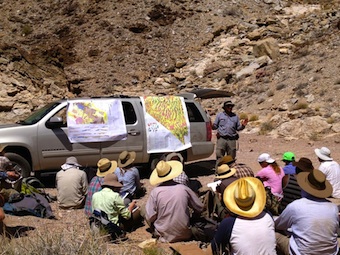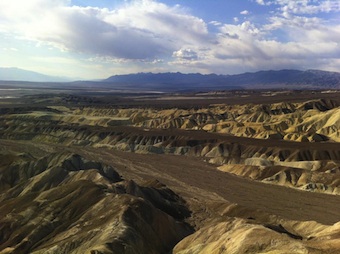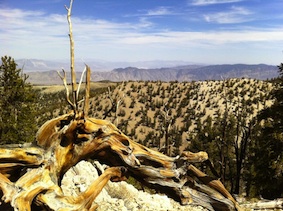Unlike the prospectors bound for CaliforniaÔÇÖs gold fields in 1849, ╣˙├˝▓╩Ă▒ÔÇÖs senior Earth Sciences students were not lost when they arrived in Death Valley early this May.
Camping in four different locations ÔÇö the Mormon Mountains in Nevada, Death Valley National Park, Panamint Valley, and the White Mountains in California ÔÇö the group of 21 students, three teaching assistants, two directors, two Nunavut Arctic College students, and one camp manager braved remarkable locations over the course of nearly a month for a one-of-a-kind field school.
ÔÇťExperiential learning is our focus,ÔÇŁ says co-director . ÔÇťThis is our big adventure for the students.ÔÇŁ
This field school, unique in Canada, had previously been set up as a field trip and geo-tourism course, where senior students would travel to very exotic places every year. They only lasted 10 or 12 days, though, and it was common for students to stay in motels rather than camp.

ÔÇťWe wanted a longer experience to mimic the professional world for our students, whether it is academic, government or, more likely, industry,ÔÇŁ says Young. ÔÇťHalf of our goal with this field school was mimicking that camp life, that building of a community to achieve a common goal.ÔÇŁ
The team of students and staff completed intensive and rigorous mapping projects, reports and field work, all the while growing accustomed to managing camp life ÔÇö from cooking to cleaning to making sure the camp was running efficiently.
ÔÇťItÔÇÖs kind of how you would live up North when working,ÔÇŁ says student Rachel Milligan. ÔÇťThese are the only people you are going to see for a month and you have to work together.ÔÇŁ
The field school was focused on four major themes: regional stratigraphy, the idea of looking at geology through time; compressional tectonics, the study of mountain building events; extensional tectonics, the development of big valleys such as Death Valley; and strike slip tectonics, such as the San Andreas Fault.
ÔÇťWe got to take everything we did up to now in school and actually see it and apply it,ÔÇŁ says student Taylor Campbell.
Locations that give the best examples
Co-directors Mike Young and were able to take advantage of the length, the location and the climate of the field school to provide the very best geological examples  for the students.

ÔÇťThe weather is so dry that we could make a plan and stick with it. We could work every day and never have to delay a project because of rain,ÔÇŁ says Young.
In Nova Scotia and much of Canada, accessing great geological examples is much more challenging, since trees, grass, or soil cover 90 per cent of the rock outcrop. Geologists often have to hike along rivers or coasts to find exposed rock surfaces. Weather also usually plays a factor in Canada. This was not the case in California, Death Valley and Nevada, as the field school worked in areas that had nearly 100 per cent exposure in every area.
 ÔÇťExposure was important for us,ÔÇŁ says Milligan. ÔÇťThe whole tectonic history and stratigraphy, the layers of rock, and the history of how they were deposited and why it is so easily seen are available in areas of great exposure like Death Valley.ÔÇŁ
ÔÇťExposure was important for us,ÔÇŁ says Milligan. ÔÇťThe whole tectonic history and stratigraphy, the layers of rock, and the history of how they were deposited and why it is so easily seen are available in areas of great exposure like Death Valley.ÔÇŁ
┬áÔÇťAnother thing we donÔÇÖt have in most of Canada is active tectonics,ÔÇŁ says co-director Dr. Gosse. ÔÇťThe students actually stood on faults that ruptured within centu

